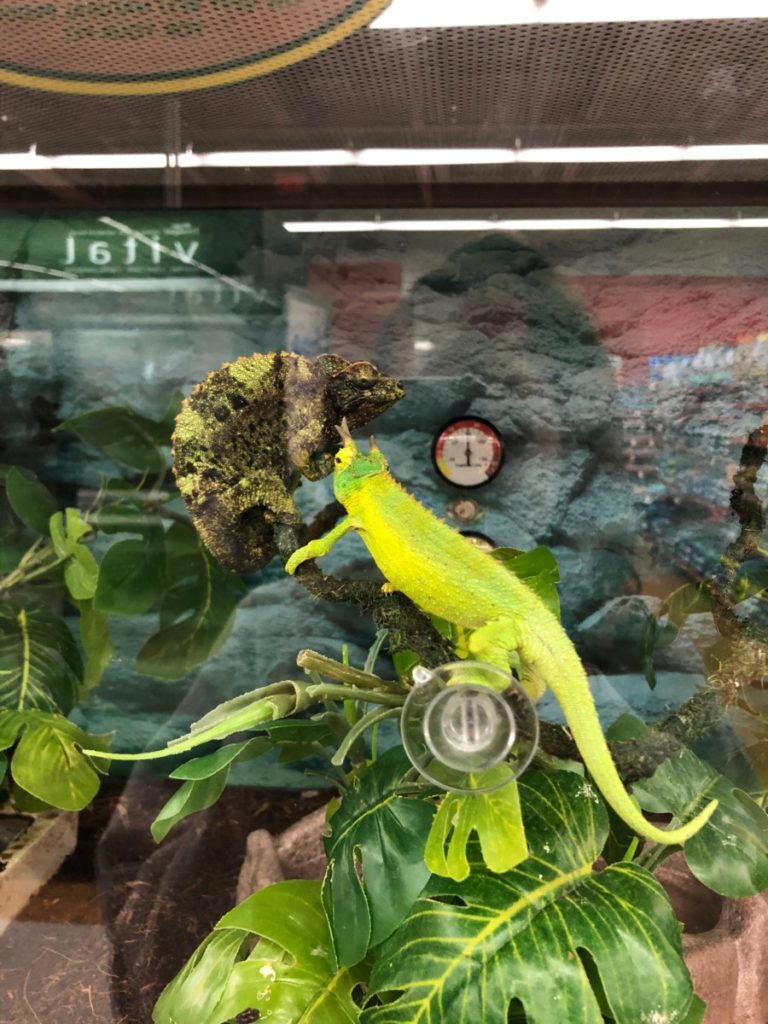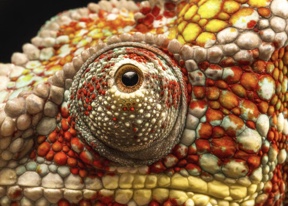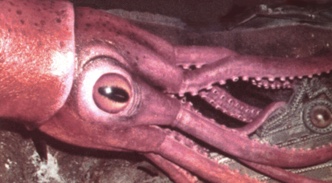There are millions of species of animals that inhabit this earth, including us. We come in all different shapes and sizes, with different behaviors and anatomies. But one of the most incredible things about us is that we all work. There is not one single way to survive. Some of us walk on two legs, others on four, others have no legs at all! Similarly, some of us have two eyes, some four, and some have no eyes at all. We are monochromatics, dichromatics, trichromatics, and so much more; we all have our own ways of seeing the world and what I think is fascinating is that they are all effective! In this post I want to explore two of the craziest animal eyes, explain how they work and what advantages they provide.
First, I’ll begin with the chameleon eye. A chameleon has two eyes on either side of its head. This placement, along with a number of muscles, gives the chameleon eye an extremely high degree of rotational freedom. In other words, a chameleon can view their environment in almost 360 degrees—342 degrees, to be exact (madchame.de, 2014)! This allows chameleons to observe their environment (potential predators) and focus on an specific object (prey) at the same time.

A chameleon’s photoreceptors consist mainly of cones, which allow them to see colors. However, they do not have many rods, so they are almost completely blind in the dark, which doesn’t affect them much as they are not nocturnal (madchame.de, 2014).
Chameleons also have the ability to transition between monocular and binocular vision. Monocular vision allows both eyes to function independently, which allows the chameleon to process to separate images (one from each eye). It is hypothesized that chameleons have two separate premotor neuronal circuits motor regions to allow them to achieve perfect monocular vision (Ott, 2001). Once the chameleon spots its prey, its eyes switch to binocular vision, which is what we humans have (asknature.org, 2016). This allows the chameleon to pull its full focus on its prey. These biological eye adaptations are incredibly helpful to chameleons, especially in terms of hunting prey and protecting themselves from possible predators in their surrounding environment.

Now, moving onto the colossal squid eye. The colossal squid has the largest eyes ever studied in the animal kingdom. What’s interesting is that even though they have the largest eyes, colossal squid aren’t the largest animals on earth. In fact, other animals that are similar in size have much smaller eyes. Large eyes are essential to this animal so they are able to collect every bit of light in the darkness of the deep ocean (Te Papa, 2019). These eyes are especially useful to locate enormous shapes in the water, such as whales—which are their only known predators (Black, 2012). On top of that, these animals have a large, complicated optic lobe which further helps enhance their vision (Te Papa, 2019). Colossal squid have binocular vision and their eyes are in fact very similar to our own “camera eyes”. However, unlike humans, colossal squid have something called light organs on each eye. These organs are used like headlights—using a type of bioluminescence— for the squid to see its prey in the darkness of the deep ocean. Colossal squid most likely cant see in color, as most deep-sea animals are not able to (Te Papa, 2019). These biological eye adaptations have formed to allow colossal squid to navigate the deep sea, as well as to find and hunt prey. Their eyes are specifically adapted to their own environment, ensuring their survival in the deep ocean.

Both animals have unique ways of seeing the world. A chameleon sees everything: color, 347 degrees, its environment and its prey at the same time. A colossal squid sees much less: no color, little light, big shadows and shapes in the distance that warn it of a potential predator. However both ways of seeing are equally effective when you consider the animals environment. Everything is relative. If colossal squid had “chameleon eyes” in the deep ocean, they would have many useless cones (because very little light reaches its habitat), and the other unique abilities such as a high degree of visual rotational freedom and monocular vision would be useless because it would be too dark (seeing as the environment of the deep sea is focused on darkness instead of light). On the other hand, if chameleons had “colossal squid eyes” all the colors they should be able to see would be replaced by too little cones and shadows. This would allow them to be more prone to being attacked by predators, as they cannot effectively see when one is coming. This would also inhibit their ability to spot prey.
In the end, we can clearly see that animal’s biology and anatomy is not random. The way an animal looks or behaves is due to millions of years of evolution. Both the chameleon’s and colossal squid’s eyes, while incredibly different anatomically, are built to help the animals survive in their own specialized environments with their different, personalized challenges.
Sources
“The eyes of the colossal squid” [Internet]. 2019. Museum of New Zealand Te Papa Tongarewa; [updated 2019 Nov 13; cited 2020 Mar 2]. Available from: https://www.tepapa.govt.nz/discover-collections/read-watch-play/science/anatomy-colossal-squid/eyes-colossal-squid
“The Chameleon Eye” [Internet]. 2014. madchame.de; [updated 2014 Sept 12; cited 2020 Mar 2]. Available from https://www.madcham.de/en/das-chamaeleon-auge/
“Eyes give 360 vision” [Internet]. 2016. asknature.org; [updated 2016 Sept 14; cited 2020 Mar 2]. Available from https://asknature.org/strategy/eyes-give-360-vision/#.Xl0m5C2ZM1I
Black , Richard. 2012. “Giant squid eyes are sperm whale defense” [Internet]. BBC News; [updated 2012 Mar 15; cited 2020 Mar 2]. Available from https://www.bbc.com/news/science-environment-17365736
Ott, Matthias. 2001. “Chameleons have independent eye movements but synchronize both eyes during saccadic prey tracking” [Internet]. Experimental Brain Research; [updated 2001 Jul 1; cited 2020 Mar 2]. Available from https://link.springer.com/article/10.1007/s002210100774
It is interesting that a chameleon can see 340 degrees. I wondered how many degrees of the left eye’s vision and the right eye’s vision are overlapping. Also, I wondered why the squid can find a better solution to spot its prey. I felt like having eyes uses too much energy and very inefficient because there is less light in the abyss.
I found it really interesting that the chameleon eye and the squid eye are so different depending on the environments they live in. The squid eye is so large so that it can see light, and even though the chameleon eye can’t see in the dark, it doesn’t need night vision because it is not nocturnal. Evolution really is amazing because it fits the needs of the species, which can vary vastly as you’ve showed in your post. Do other animals living in similar environments to the squid and chameleon have similar eye structures? Very interesting post!
Evolution has always been interesting to me, and the eye is such a good example. The eyes have evolved through divergent evolution because organisms have experienced mutations and adaptations that change the function of their eye to suit the needs of their environments. It makes sense that squid have large eyes with little to no color receptors while chameleons have 360 degree vision with no nocturnal vision because their environments require different traits in order for their survival. The evolution of the eye is crucial for organisms fitness and chameleons and squid are a great example!